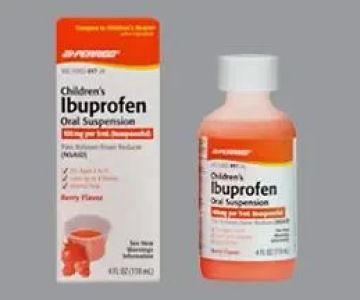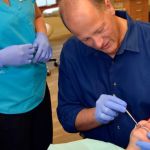Understanding Oral Thrush in Children
Oral thrush, also known as pediatric oral candidiasis, is a common fungal infection in children caused by the overgrowth of the Candida fungus, particularly Candida albicans. This yeast naturally lives in the mouth but can multiply excessively when the immune system is weakened or the oral environment changes. Although oral thrush can affect anyone, infants and young children are particularly susceptible due to their developing immune systems and the introduction of new foods and oral devices.
What Causes Oral Thrush in Children?
1. Immature Immune Systems
In babies, the immune system is still maturing, which makes it harder for their bodies to keep the natural yeast under control. This can lead to fungal overgrowth resulting in oral thrush.
2. Antibiotic Use
Antibiotics can disrupt the natural balance of microorganisms in the mouth by killing beneficial bacteria that usually keep yeast growth in check. When this balance is disturbed, Candida can thrive and cause an infection.
3. Use of Pacifiers or Bottles
Prolonged use of pacifiers or bottles, especially if not cleaned properly, creates a warm and moist environment favorable for yeast growth. Additionally, sugars in milk or juices can feed the fungus.
4. Medical Conditions and Medications
Children with certain health conditions, such as diabetes or immune deficiencies, are at higher risk. Also, children using inhaled corticosteroids for asthma may develop oral thrush if the mouth is not rinsed after use.
Recognizing the Symptoms of Oral Thrush
1. White Patches Inside the Mouth
The most recognizable sign is creamy white lesions on the tongue, inner cheeks, roof of the mouth, gums, or tonsils. These patches can sometimes be wiped off, revealing red and irritated tissue underneath.
2. Discomfort or Pain
Children may experience soreness or a burning sensation in their mouth, leading to fussiness, difficulty feeding, or refusal to eat.
3. Cracking and Redness at the Mouth Corners
Also known as angular cheilitis, this symptom often accompanies oral thrush and can cause discomfort while opening the mouth or eating.
4. Diaper Rash
In some cases, the yeast infection might also spread to the diaper area, causing a stubborn rash that doesn't respond to usual treatments.
Real-Life Story: Emma’s Battle with Oral Thrush
Emma, a 6-month-old baby from Texas, started showing signs of fussiness during feeding. Her mother noticed white patches inside her mouth and initially thought it was leftover milk. After a week of persistent symptoms, they visited a pediatrician who diagnosed Emma with oral thrush. With timely antifungal treatment and improved hygiene practices, Emma recovered fully within two weeks. Emma’s story highlights the importance of early detection and appropriate care to avoid complications.
How Is Oral Thrush Diagnosed in Children?
Doctors typically diagnose oral thrush by examining the inside of the mouth for characteristic white patches and inflammation. In uncertain cases, a swab may be taken for laboratory analysis to confirm the presence of Candida.
Effective Treatments for Oral Thrush in Children
1. Antifungal Medications
Doctors usually prescribe topical antifungal treatments such as nystatin suspension or clotrimazole lozenges that are safe for infants and children. These medications help eliminate the fungal infection quickly and reduce discomfort.
2. Maintaining Good Oral Hygiene
Cleaning pacifiers, bottles, and toys regularly is crucial. For older children, gentle brushing of the tongue and gums can help reduce yeast buildup.
3. Dietary Adjustments
Reducing sugar intake and avoiding overly processed foods can starve the fungus and help the child’s mouth heal faster.
4. Addressing Underlying Causes
If oral thrush is linked to medications like antibiotics or inhaled steroids, doctors may adjust treatments or recommend rinsing the mouth after inhaler use to prevent recurrence.
Prevention Tips for Parents
1. Sterilize Feeding Equipment
Always sterilize bottles, pacifiers, and teething toys to minimize yeast contamination.
2. Breastfeeding Hygiene
For breastfeeding mothers, maintaining breast hygiene and treating any nipple infections can prevent passing thrush to the baby.
3. Monitor Medication Use
Follow pediatrician instructions carefully when giving antibiotics or steroids, and be vigilant for early signs of thrush.
4. Promote Healthy Eating Habits
Encourage a balanced diet rich in natural probiotics to support the child’s immune system and oral health.
When to See a Doctor
If white patches persist for more than a week, if your child experiences pain, feeding difficulties, or if symptoms spread beyond the mouth, it’s important to consult a healthcare provider. Early intervention can prevent complications and promote faster healing.






 Family & Cosmetic Dentistry5.0 (4 review)
Family & Cosmetic Dentistry5.0 (4 review) Associated Orthodontists - Joliet4.0 (132 review)
Associated Orthodontists - Joliet4.0 (132 review) Hartsdale Dental Care: Andrew Woo, DDS4.0 (407 review)
Hartsdale Dental Care: Andrew Woo, DDS4.0 (407 review) Just for Kids Dentistry4.0 (325 review)
Just for Kids Dentistry4.0 (325 review) Breakwater Dental4.0 (58 review)
Breakwater Dental4.0 (58 review) Family Dentistry of Westford4.0 (19 review)
Family Dentistry of Westford4.0 (19 review) The Importance of Oral Health Education During Pregnancy for a Healthy Pregnancy
The Importance of Oral Health Education During Pregnancy for a Healthy Pregnancy Best Tips for Brushing Your Teeth Properly for Healthy Gums: Essential Techniques for Oral Health
Best Tips for Brushing Your Teeth Properly for Healthy Gums: Essential Techniques for Oral Health Why Skipping Dental Checkups Can Lead to Bigger Oral Health Problems
Why Skipping Dental Checkups Can Lead to Bigger Oral Health Problems Advantages of Porcelain Dental Restorations
Advantages of Porcelain Dental Restorations How Can Diabetes Cause Tooth and Gum Problems? Preventing and Managing Oral Health Issues
How Can Diabetes Cause Tooth and Gum Problems? Preventing and Managing Oral Health Issues Healthy Habits for Promoting Good Oral Health and Hygiene: Tips for a Healthy Smile
Healthy Habits for Promoting Good Oral Health and Hygiene: Tips for a Healthy Smile